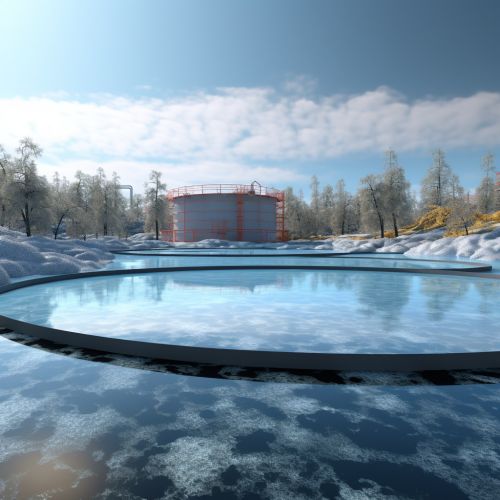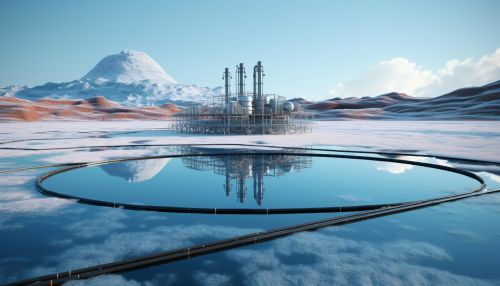Reservoir Modeling
Introduction
Reservoir modeling is a process used in the oil and gas industry to replicate the physical and chemical behaviors of a hydrocarbon reservoir. The purpose of this is to estimate the size and recoverability of the oil or gas present. This is done using mathematical models and software to simulate the reservoir's performance under various production scenarios.
History
The concept of reservoir modeling dates back to the early 20th century, when the first attempts were made to understand the behavior of hydrocarbon reservoirs. The development of reservoir modeling has been driven by the need to maximize the extraction of hydrocarbons and to understand the complex physical and chemical processes that occur in a reservoir.


Types of Reservoir Models
There are two main types of reservoir models: geological models and reservoir simulation models.
Geological Models
Geological models are used to represent the physical structure of the reservoir. They incorporate data from various sources, such as well logs, seismic data, and core samples, to create a detailed picture of the reservoir's structure and composition. This includes information on the reservoir's size, shape, depth, and the types of rocks and fluids it contains.
Reservoir Simulation Models
Reservoir simulation models are mathematical models that simulate the flow of fluids in the reservoir. These models take into account factors such as pressure, temperature, and the properties of the fluids and rocks in the reservoir. They are used to predict the behavior of the reservoir over time and to plan production strategies.
Process of Reservoir Modeling
The process of reservoir modeling involves several steps, including data collection, model construction, history matching, and prediction.
Data Collection
The first step in reservoir modeling is data collection. This involves gathering data from a variety of sources, including well logs, seismic surveys, and core samples. This data is used to understand the physical properties of the reservoir, such as its size, shape, and composition.
Model Construction
Once the data has been collected, it is used to construct a model of the reservoir. This involves creating a three-dimensional representation of the reservoir, incorporating data on its size, shape, depth, and the types of rocks and fluids it contains.
History Matching
After the model has been constructed, it is calibrated using historical production data. This process, known as history matching, involves adjusting the model until its predictions match the actual production data. This ensures that the model accurately represents the behavior of the reservoir.
Prediction
Once the model has been calibrated, it can be used to predict the future behavior of the reservoir. This involves running simulations to see how the reservoir will respond to different production strategies. These predictions can then be used to plan future production operations.
Applications of Reservoir Modeling
Reservoir modeling is used in a variety of applications in the oil and gas industry. These include:
- Reservoir management: Reservoir models are used to plan and optimize production operations. This includes determining the best locations for drilling wells, planning the extraction of oil and gas, and managing the reservoir to maximize recovery.
- Enhanced oil recovery: Reservoir models are used to plan and implement enhanced oil recovery (EOR) techniques. These are methods used to increase the amount of oil that can be extracted from a reservoir.
- Reservoir monitoring: Reservoir models are used to monitor the performance of the reservoir over time. This includes tracking changes in pressure, temperature, and fluid composition.
- Risk assessment: Reservoir models are used to assess the risks associated with different production strategies. This includes evaluating the potential for reservoir damage, such as water breakthrough or gas coning.
Challenges and Future Directions
While reservoir modeling is a powerful tool, it is not without its challenges. One of the main challenges is the uncertainty associated with the data used to construct the models. This can lead to inaccuracies in the model's predictions.
Another challenge is the complexity of the reservoirs themselves. Each reservoir is unique, with its own set of physical and chemical properties. This makes it difficult to create a one-size-fits-all model.
Despite these challenges, the field of reservoir modeling continues to evolve. Advances in technology are leading to more accurate and detailed models. In addition, the increasing use of data analytics and machine learning is opening up new possibilities for reservoir modeling.
See Also
Petroleum Geology Reservoir Simulation Enhanced Oil Recovery Reservoir Management
